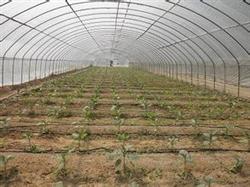The technique of controlling eggplant wilt by prescribing the right medicine to the case

The main causes of eggplant wilting are blight, Sclerotinia sclerotiorum, stem rot, bacterial wilt, Verticillium wilt, root-knot nematode, fertilizer damage and so on. The specific diagnosis is as follows: 1. Look at the field distribution. When fertilizer damage occurs, it will wilt at noon on a sunny day, return to normal in the evening, and seriously cause plant death. On the other hand, the field distribution shape of the other diseases is spot distribution. 2. See if there is a root knot at the root. Root knot nematode disease occurs, and root knot of different sizes can be seen in the root. But the other diseases mentioned above have no root knot. 3. See if the vascular bundles turn brown. The vascular bundles of Verticillium wilt and bacterial wilt of eggplant turned brown, but there were no such symptoms in the above other diseases. The two diseases showed no symptoms at the seedling stage and began to show after flowering and fruiting. However, from the bottom to the top, the vascular bundle of the diseased stem was yellowish brown, and when it was wet, the stem base produced white mildew, irregular yellowish patches appeared between the leaf margin and leaf veins, remained green near the main vein, showed brown palmate mottled, and then the diseased site withered, showing a petal shape, and sometimes appeared the phenomenon of "half crazy". On the other hand, the middle and lower cortex of the diseased stem of bacterial wilt is rough, with verrucous protuberances and adventitious roots of different length, and sometimes oil-stained brown irregular spots on the diseased stem. If the diseased stem is cross-sectioned and squeezed slightly, there is milky mucus overflow (bacterial pus).
- Prev

Technology of Tomato grafting eggplant
With the development of facility agriculture, eggplant can be planted year after year, so soil-borne diseases such as eggplant Verticillium wilt have become the main obstacles affecting eggplant production. We used tomato (Maofan 802) as rootstock to graft eggplant, which not only effectively prevented eggplant Verticillium wilt and bacterial wilt, but also had tall and neat plants, good fruit quality and high yield.
- Next

What about the eggplant falling from the greenhouse
There are many reasons for eggplant falling flowers, such as excessive vegetative growth, weak plant growth, too dry or too high humidity, high temperature or lack of light. Prevention and control measures of vegetative growth: squatting seedlings at the right time, properly controlling water and fertilizer in squatting stage, and ploughing and loosening soil.
Related
- Where is it suitable to grow horseradish in China? it is expected to see the middle altitude horseradish in Alishan.
- How to prevent tomato virus disease reasonably? (Control methods included)
- Many people like to plant towel gourd on the balcony. What are the main points of this method and management?
- What crops can chili peppers be mixed with?
- Fertilization techniques and matters needing attention in Tomato
- What are the grafting techniques for peach seedlings in spring?
- Harm and control methods of root swelling disease of Chinese cabbage
- What are the pests of sweet potatoes? How to prevent and cure it?
- Symptoms, causes and Control methods of navel Rot in Tomato
- The cause of "Cucumber rotten bibcock" in Farmers' planting Cucumber and its Control Plan

